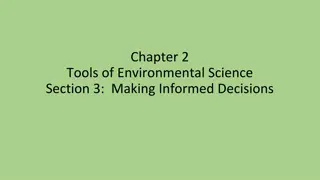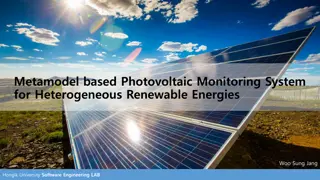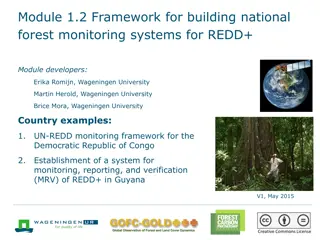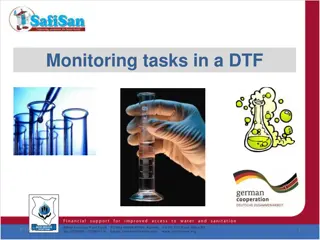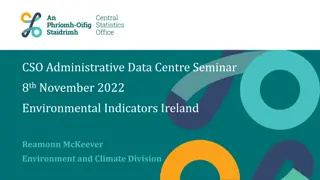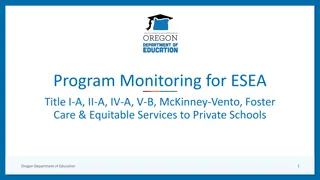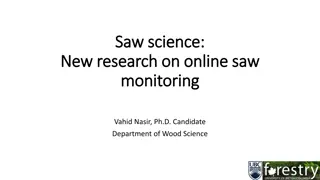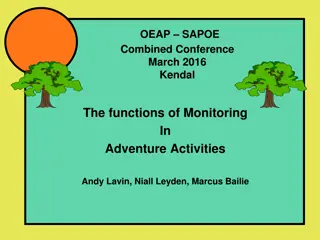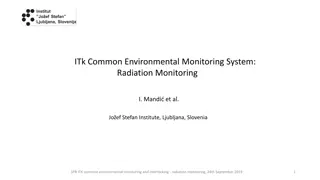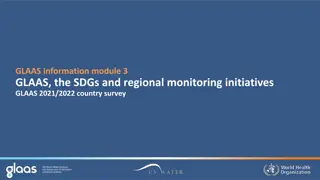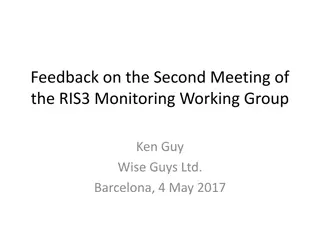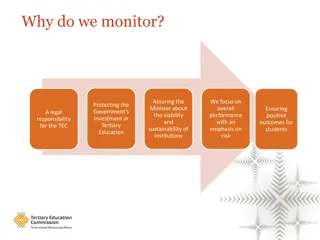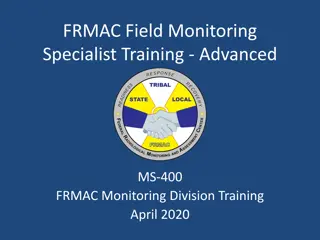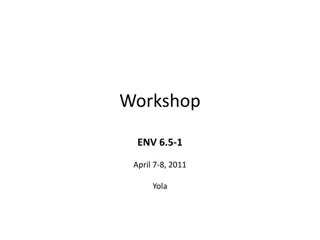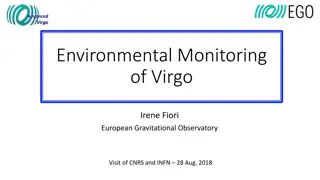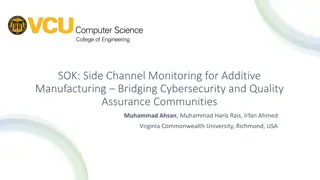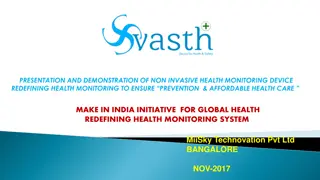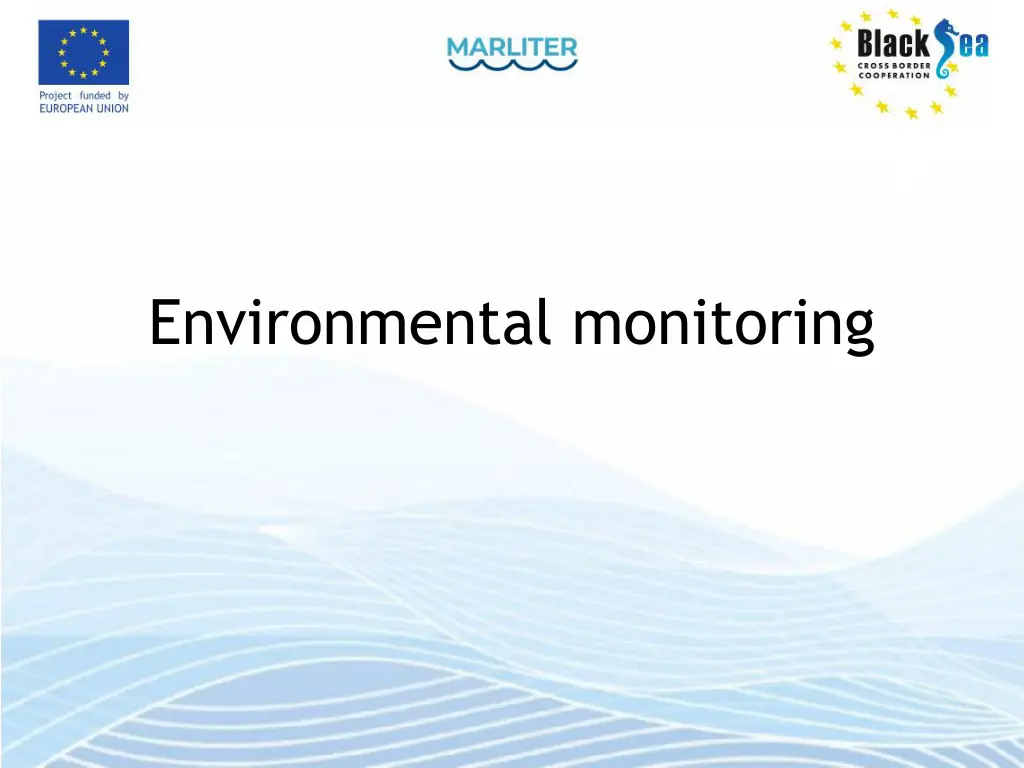
Environmental Monitoring and Its Applications
Environmental monitoring plays a crucial role in assessing environmental conditions, supporting policy development, and providing valuable information to policymakers and the public. This process is vital for protecting human health and the environment. Applications of environmental monitoring span across climate change, weather forecasts, emergency situation coordination, and biodiversity trends. Various approaches, including satellite observations, on-site measurements, research vessels, and surveys of marine life, are used to collect data. Satellite observations from programs like Copernicus EU and NASA Earth Observatory, as well as in-situ monitoring using autonomous underwater vehicles and remotely operated vehicles, contribute to monitoring efforts. Surveys and samples, fisheries management, and the use of technologies like sonars for seafloor mapping are essential components of environmental monitoring practices.
Uploaded on | 2 Views
Download Presentation

Please find below an Image/Link to download the presentation.
The content on the website is provided AS IS for your information and personal use only. It may not be sold, licensed, or shared on other websites without obtaining consent from the author. If you encounter any issues during the download, it is possible that the publisher has removed the file from their server.
You are allowed to download the files provided on this website for personal or commercial use, subject to the condition that they are used lawfully. All files are the property of their respective owners.
The content on the website is provided AS IS for your information and personal use only. It may not be sold, licensed, or shared on other websites without obtaining consent from the author.
E N D
Presentation Transcript
Goals Environmental monitoring serves to assess environmental conditions and trends. It supports policy development and its implementation and provides information to national policymakers, international organisations and the public. It is critical to the protection of human health and the environment.
Applications Climate change and adaptation Weather forecasts Shipping and offshore activities Emergency situations coordination State of the environment Fisheries management Biodiversity trends
Approaches Satellite observations On-site measurements Research vessels Profilers / Argo floats Gliders Fixed oceanographic stations Surveys of marine life Data on physical, chemical and biological systems
Satellite observations Copernicus EU Earth observation programme https://www.copernicus.eu NASA Earth Observatory https://earthobservatory.nasa.gov GEOSS Portal https://www.geoportal.org
In situ monitoring AUVs and ROVs autonomous underwater vehicles and remotely operated vehicles Argo floats profiles of temperature, salinity and currents from sea surface to 2000 m http://www.monoceanetmoi.com https://argo.ucsd.edu
satellite airplane for transmission animal with tracker antenna research vessel ROV (remotely operated vehicle)/ sea drone profiling float mooring rosette sampler underwater glider Source: mon oc an & moi, 2015
Surveys and samples Rosette sampler measuring conductivity, temperature and depth (CTD) Sonars for seafloor mapping and underwater archeology
Fisheries management Regular monitoring provides necessary data for managing fisheries. Sustaining fishing yields and conservation of marine resources requires understanding of changes in fish populations. Beam trawl
MSFD monitoring programmes Every EU coastal country has a national monitoring programme which measures its progress towards good environmental status of marine waters. It covers the following areas: Biodiversity Non-indigenous species Commercial fish stocks Food webs Eutrophication Sea floor integrity Hydrographical conditions Contaminants in the marine environment Contaminants in sea food Marine litter Underwater noise
Regional cooperation in the Black Sea Black Sea Integrated Monitoring and Assessment Program (BSIMAP), 2002 Regional Marine Litter Monitoring Programme, 2018 Projects supporting regional environmental monitoring EMBLAS Plus ANEMONE CeNoBS EO4SIBS
Citizen science for environmental monitoring Beach litter Marine LitterWatch Clouds GLOBE Observer: Clouds Marine research Sea Watchers / Observadores del Mar Birds SmartBirds Pro
Summary Monitoring is essential for better understanding of the environment and the changes occurring in it Monitoring is performed by a combination of remote sensing and on site measurements Common efforts across national borders are indispensable for a grasp of the ongoing processes Citizen sciences contributes to a more detailed picture of the environment
Joint Operational Programme Black Sea Basin 20142020 The publication is edited by the Black Sea NGO Network Varna, October 2020 Joint Operational Programme Black Sea Basin 2014 2020 is co- financed by the European Union through the European Neighbourhood Instrument and by the participating countries: Armenia, Bulgaria, Georgia, Greece, Republic of Moldova, Romania, Turkey and Ukraine This publication has been produced with the financial assistance of the European Union. The contents of this publication are the sole responsibility of the Black Sea NGO Network and can in no way be taken to reflect the views of the European Union

